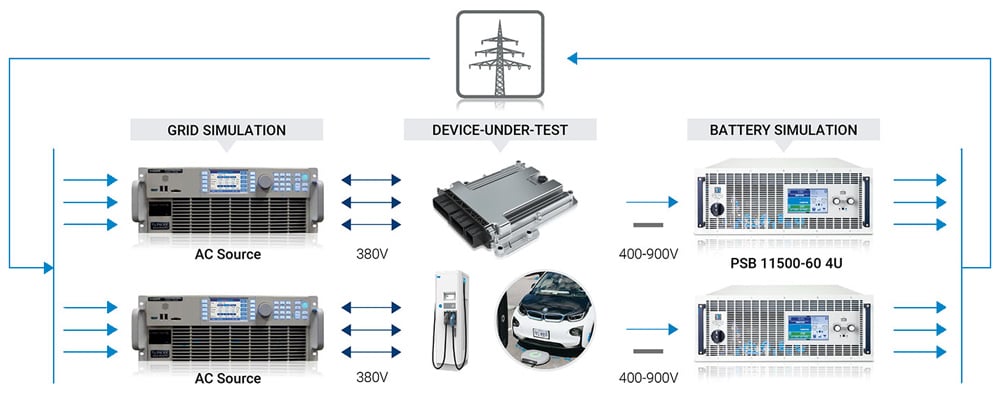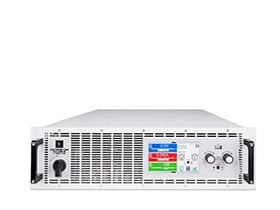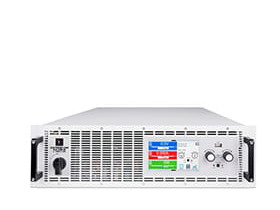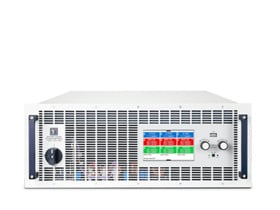연락처
텍트로닉스 담당자와 실시간 상담 6:00am-4:30pm PST에 이용 가능
전화 문의
9:00am-6:00PM KST에 이용 가능
다운로드
매뉴얼, 데이터 시트, 소프트웨어 등을 다운로드할 수 있습니다.
피드백
스마트 에너지 테스트: 충전, 방전, 재생
오늘날의 모바일 수요로 인해 배터리는 보안 시스템부터 버스까지 모든 것을 구동하며, 개발 및 생산 과정에서 철저한 테스트가 필요합니다.기존에는 충전에 프로그래머블 DC 파워 서플라이를 사용하고, 방전은 전자 부하나 저항 부하를 사용했습니다.이제 EA Elektro Automatik PSB 시리즈와 같은 양방향 회생형 파워 서플라이는 두 가지 기능을 하나의 장치에서 제공합니다.
PSB 시리즈는 DC 전원 및 회생형 전자 부하로 동작하며, 모드 간 전환이 매끄럽습니다. 방전 중인 배터리에서 에너지를 회수하여 지역 전력망에 다시 공급함으로써 에너지 낭비와 시설 난방 비용을 줄입니다. EA의 솔루션은 리튬 이온 및 납산 배터리용 배터리 테스트 소프트웨어를 기본으로 제공하여, 공간과 자본을 절약하면서 테스트를 간소화합니다.
응용 분야 솔루션
배터리 테스트
효율적인 배터리 테스트를 위한 EA PSB 양방향 파워 서플라이 사용
배터리는 더 작아지고 점점 더 효율적으로 발전하고 있습니다. 기술 발전 속도를 따라가기 위해서는 테스트 장비도 고도화되고, 유연하며, 빠르게 대응할 수 있어야 합니다.이러한 이유로 EA Elektro-Automatik의 PSB 양방향 프로그래머블 DC 파워 서플라이 시리즈는 첨단 배터리 테스트에 최적의 솔루션입니다.
PSB 양방향 서플라이는 배터리 충전과 방전 제어를 매끄럽게 전환할 수 있습니다.PSB, PSI, EL 및 ELR 제품 시리즈에는 배터리 충전, 정적 방전, 동적 테스트 기능이 기본으로 포함되어 있습니다. EA는 적합한 장비를 선정하는 데 도움을 드리고, 모든 테스트 장비와 테스트 중인 배터리의 안전성과 정상 작동을 보장하기 위한 견고한 배터리 테스트 시스템 구축에 필요한 기본 가이드 및 고려사항을 제공합니다.
장점:
- 오토레인징 기능으로 정적 충/방전 및 동적 테스트 기능 내장
- 전력 밀도
- 양방향 회생형
- 임의 파형 및 함수 발생기
- 낮은 EMC
- 출력 전압 최대 2000V
- 플러그 앤 플레이 병렬화
배터리 충전
리튬 이온과 같은 배터리를 충전하는 데 사용하는 프로그래머블 DC 파워 서플라이
고객은 전기 자전거, 하이브리드 또는 순수 전기차나 트럭 등 차량 전기화(EV)와 관련된 다양한 프로젝트를 지원하기 위해 중전력 또는 고전력 배터리 충전기를 요청합니다. 이러한 배터리 충전기는 배터리 사이클, 성능, 수명 테스트를 수행하기 위한 EV 환경에서의 테스트 장비 일부로 자주 사용됩니다. 또한 테스트 장비에는 일반적으로 테스트할 배터리 유형에 맞는 제어, 모니터링 및 안전 메커니즘을 갖추는 것이 일반적입니다.
이러한 배터리 테스트를 위한 장비에는 적절한 인터페이스(CAN 같은 아날로그 또는 디지털), 높은 정밀도, 우수한 해상도, 낮은 리플을 갖춘 프로그래머블 DC 파워 서플라이가 필요합니다. 이 장비는 조정 가능한 고유연성 DC 전원 백본 역할을 하며, 다양한 정격 전압과 용량을 가진 여러 종류의 배터리 셀 또는 팩을 연결할 수 있도록 합니다.EA 파워 서플라이에는 충전 전압 또는 배터리 용량에 도달하면 자동으로 충전을 중지하는 배터리 충전 기능을 기본적으로 제공합니다.
장점:
- 오토레인징에 내장된 정전기 충전, 정전기 방전 및 동적 테스트 기능
- 전력 밀도
- 양방향 회생형
- 임의 파형 및 함수 발생기
- 낮은 EMC
- 출력 전압 최대 2000V
- 플러그 앤 플레이 병렬화
배터리 시뮬레이션
프로그래머블 양방향 DC 파워 서플라이를 사용한 납산 및 리튬이온 배터리 시뮬레이션
양방향 DC 파워 서플라이는 본질적으로 전원을 공급하고 흡수할 수 있기 때문에 배터리 시뮬레이션에 완벽합니다. 테스트 엔지니어는 특정 배터리 유형을 모방하는 작동 곡선을 구현함으로써 배터리 전력을 정확하게 재현하여 배터리를 충전하거나 배터리에서 에너지를 받는 장치를 테스트할 수 있습니다. Elektro-Automatik의 배터리 시뮬레이터 소프트웨어는 충전 또는 방전 시 납산 및 리튬 이온 배터리의 전기적 및 화학적 특성을 시뮬레이션할 수 있습니다.
EA는 독일의 저명한 Fraunhofer 연구소와 협력하여 수년간의 연구를 바탕으로 배터리 시뮬레이션 알고리즘을 개발했습니다. 이제 배터리를 동일한 SOC로 충전하거나 방전할 때까지 기다릴 필요 없이, 몇 분 안에 매우 특정한 충전 상태(SOC)에서 배터리 셀 세트를 시뮬레이션할 수 있습니다. 소프트웨어는 배터리 용량, 내부 저항, 주변 온도 및 상태(SOH)까지 고려합니다.
장점:
- Fraunhofer 연구소와 협력하여 개발된 알고리즘
- 오토레인징
- 전력 밀도
- 배터리 시뮬레이션
- 양방향 및 회생형
- 임의 파형 및 함수 발생기
- 낮은 EMC
- 최대 2000V의 출력 전압
- 플러그 앤 플레이 병렬 연결






